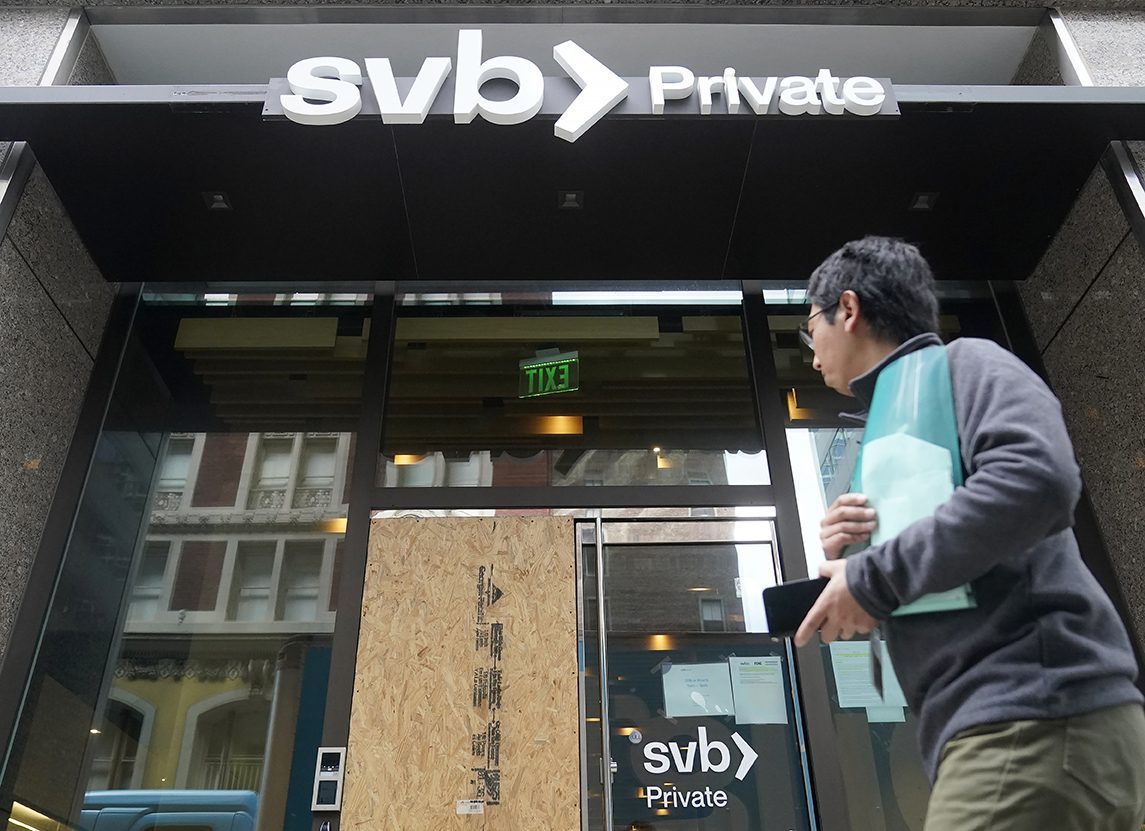
As repercussions from the stunning collapse of Silicon Valley Bank (SVB) continue to ripple through the banking industry, we asked Haas experts for their views on where the system broke down and whether there may be broader trouble viewing.
Professors Ross Levine, Panos Patatoukas, and Nancy Wallace said SVB’s problems were “banking 101” and that its management and board failed in their fiduciary duties. Levine, a banking industry expert, said the situation “suggests stunningly incompetent bank supervision and regulation,” and cited research that Silicon Valley Bank may be “the tip of a gigantic iceberg.” Patatoukas agreed, asking “If (regulators) cannot spot something as straightforward as SVB’s issues, then what else are they missing?”
Professor Ross Levine, Willis H. Booth Chair in Banking and Finance, Haas Economic Analysis & Policy Group

“Silicon Valley Bank (SVB) failed in the simplest and most vanilla way. It had long-term assets, including Treasury securities and other U.S. government backed-securities, and short-term liabilities, namely deposits. This exposed the SVB to interest rate risk because long-term securities are much more sensitive to interest rate changes than deposits. As interest rates went up over the last year, the price of long-term securities went down, challenging SVB’s solvency.
Regulators at the Federal Reserve and the Federal Deposit Insurance Corporation (FDIC) did not need sophisticated supervisory and regulatory skills or elaborate training to recognize such interest rate risk. It is banking 101.
While new information might emerge, current knowledge suggests stunningly incompetent bank supervision and regulation. The Federal Reserve and FDIC regulators need to explain why they did not require SVB to hedge interest rate risk three years ago, two years ago, etc.
The apparent failure of Federal Reserve and FDIC regulators in the case of SVB raises questions about the effectiveness of U.S. regulatory authorities in general. First, if regulators failed to address the most basic of risks—interest rate risk—in SVB, did they miss this interest rate risk in other banks? Second, have regulators effectively addressed the more complex risks that some banks take? Third, did regulators allow systemic risks to grow in the U.S. banking system?
Recent research provides an alarming answer to whether the Federal Reserve and FDIC blew it on interest rate risk beyond SVB, suggesting that SVB is the tip of a gigantic iceberg. A study conducted over the weekend indicates that the market value of U.S. banking assets is about $2 trillion dollars less than the reported book value due to increases in interest rates during the last year. It is impossible to determine the degree to which banks used derivatives to hedge interest rate risk. Thus, one cannot conclude definitively that the U.S. banking system experienced a loss of $2 trillion. However, these statistics, in conjunction with the details on SVB, scare me.
While Secretary of the Treasury Janet Yellen and Jay Powell, Chair of the Federal Reserve Board, might claim that the U.S. banking system is very well capitalized and very well supervised and regulated, they have some explaining to do.
Recent events also raise concerns about the competency of U.S. monetary policy, which, like much of bank regulation, is conducted by the Federal Reserve. The Federal Reserve started raising interest rates a year ago to combat inflation. (As a side point, the Federal Reserve created the inflation it is now combating.) It should have been evident to the Federal Reserve that banks with long-term assets and short-term liabilities that had not hedged interest rate risk would experience significant losses as interest rates rose. Moreover, the Fed has or can obtain information on banks’ assets and liabilities and the degree to which they were hedging interest rate risk. Thus, they knew—or should have known—which banks were most exposed to interest rate risk as they started raising interest rates. As a result, even if bank regulators failed to force banks to address interest rate risk before the Federal Reserve began to raise rates, the Fed should have been aware of this vulnerability as it started tightening monetary policy to fight inflation.”
Associate Professor Panos Patatoukas, the L.H. Penney Chair in Accounting, Haas Accounting Group

“The SVB management and board failed in their fiduciary duties. The Fed also failed in its supervisory role since it failed to spot a basic duration mismatch and a massive run-prone deposit base, together with a lack of interest rate risk management on the part of SVB. It would have been straightforward to see from SVB’s financial statements that its (tier 1) liquidity ratio was much lower after accounting for the accumulated but unrecognized losses from the revaluation of their long-term bond portfolio, which basically indicates that SVB had elevated risk well before the run on the bank.
The SVB failure raises concerns about structural problems impacting regional banks, their depositors, and capital providers. It also raises concerns about the ability of regulators to spot risks ahead of time. If they cannot spot something as straightforward as SVB’s issues, then what else are they missing?”
Professor Nancy Wallace, Lisle and Roslyn Payne Chair in Real Estate and Capital Markets

“This is a monumental failure of risk management on the part of both the bank and the regulators. Interest rate risk is basic banking 101. Added to that is the very large depositor concentration from one industry. I also suspect that the loans on (Silicon Valley Bank’s) balance sheet are likely to be poorly underwritten given the overly cosy relationship between the bank and the king makers in Silicon Valley. They frequently provided loans to startups as a bridge between funding rounds. They did this to protect startup founders from the dilution effects of additional equity rounds—the more normal way to fund startups.”